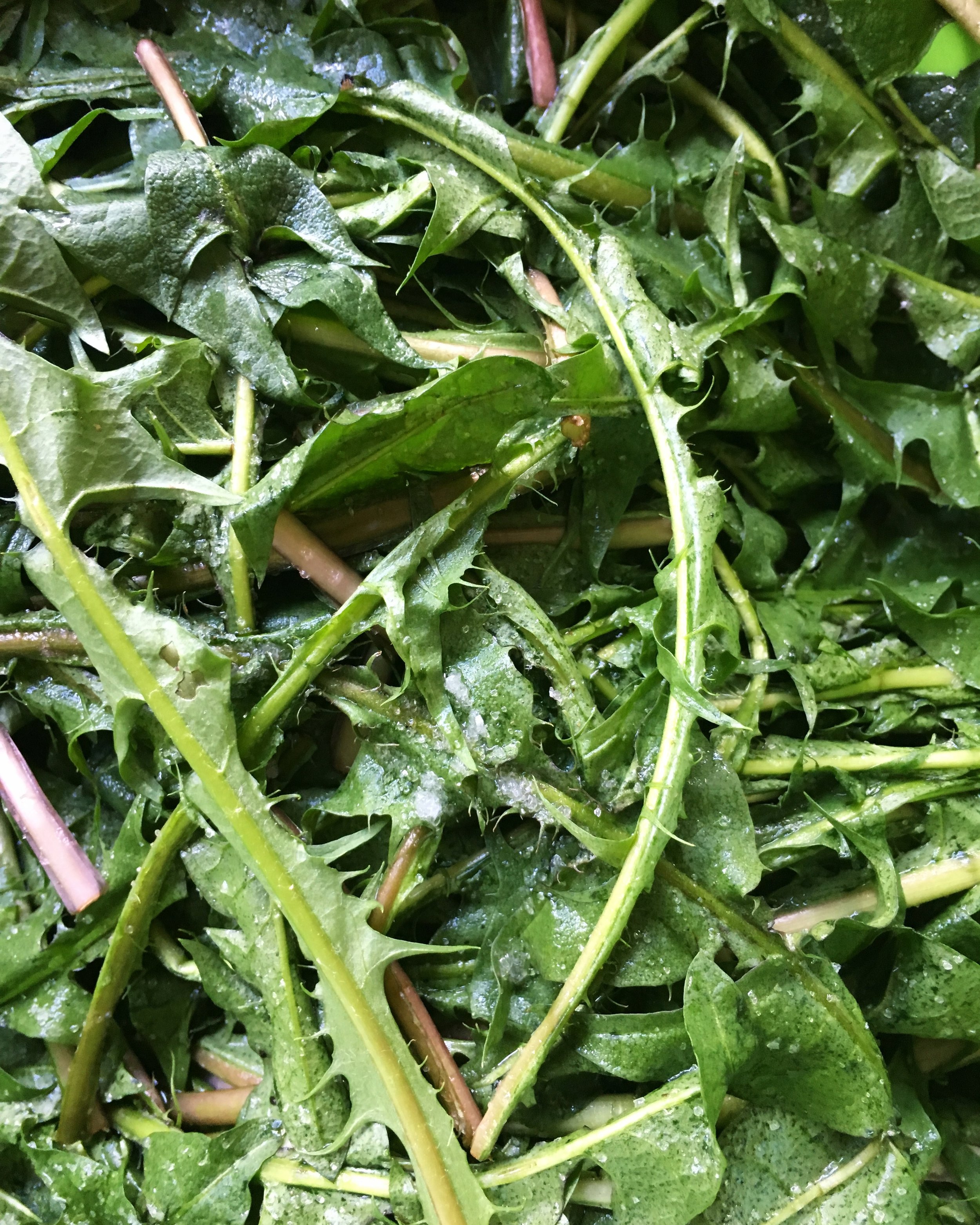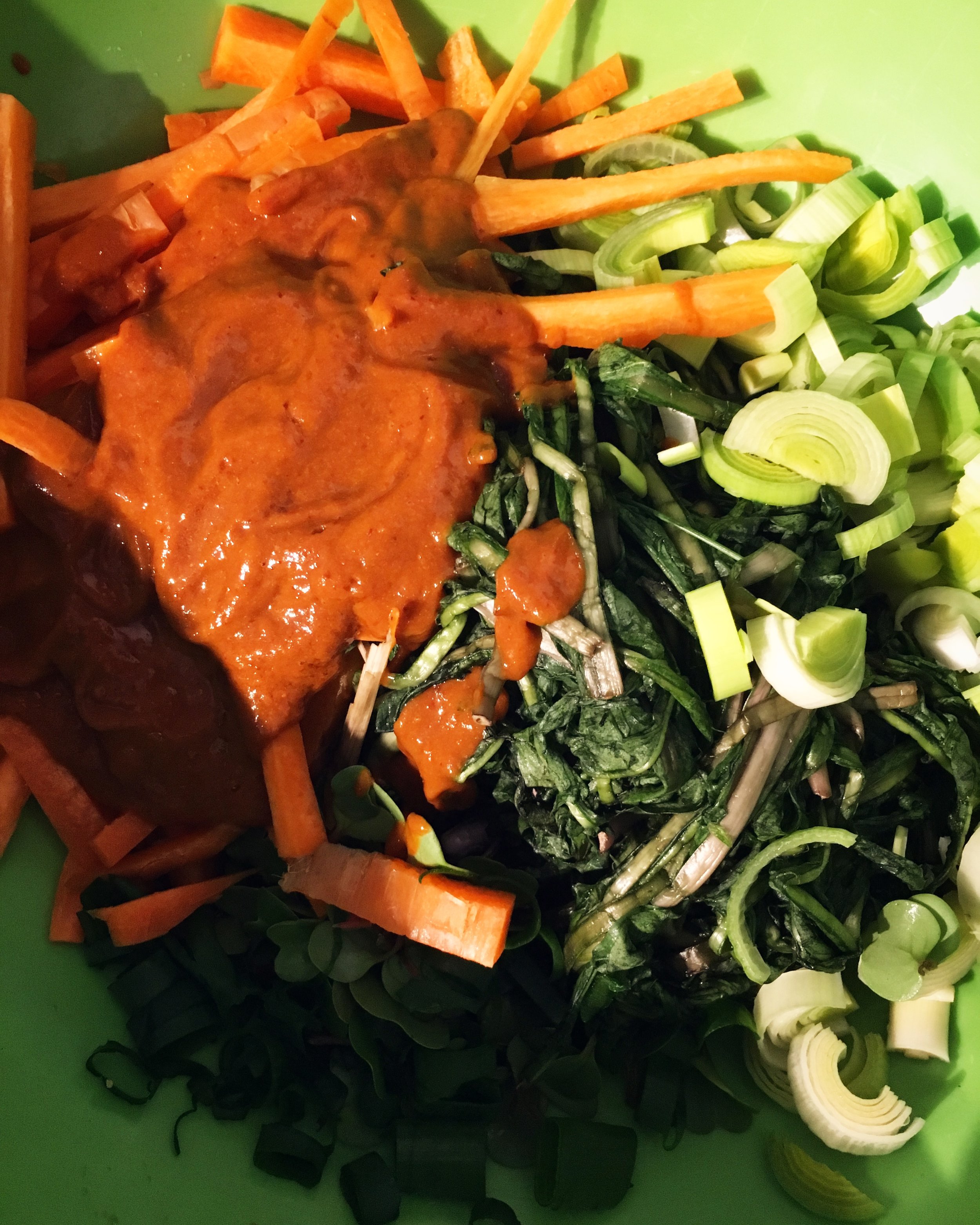Dandelion Leaf Kimchi
In high school I had several good friends from Korean families, and I always looked forward to being invited over for meals in their homes because that usually meant I was going to be served kimchi. Later on I found out where the Korean grocery store was so I could make sure I always had some in my fridge. A couple years ago I realized that there were several recipes online for making small batches so I've now been making my own. I've been collecting a lot of dandelions this spring, and in thinking of ways to use them I realized that they might make a pretty good kimchi, and I was right!
I don't want to call this post a recipe per se, as I don't feel versed enough in Korean food to write one, and I relied heavily on various other online sources which I will be linking here. From how I understand it kimchi is fairly flexible, so feel free to adjust things to your preferences.
Your first step is to salt the dandelion greens. This is to start releasing the water content in the leaves. Sprinkle them liberally in salt and massage them a bit to start the process. If you've made sauerkraut before this will be familiar to you. Let them sit for about an hour and a half, and while this is happening prep the rest of the ingredients.
Chop up the veggies you are going to be adding to the dandelion greens (I used carrots, radish microgreens, leeks, and green garlic). For anything bulky make sure you julienne it finely to help the overall texture. Several of the recipes for the kimchi paste include making a porridge of rice flour to help everything stick together. I wanted to keep the steps as simple as possible, and knowing that you can make hot soup in a Vitamix blender I threw all the ingredients for the paste in there and blended it smooth. It seems to have worked really well and saved a lot of time!
If the dandelion greens are too salty you can rinse them off. When you like them toss in the chopped veggies, and massage the kimchi paste to cover everything. After that pack it in a jar so that the veggies are completely submerged. Leave it on the counter for three days, and then put it in the fridge. You can eat it right away, or you can wait for it to get more sour.
Here are some resources that are more complete recipes if you are looking for ideas on salt ratios and flavours for the kimchi paste:
To support my blogging endeavours, this post contains affiliate links from which I receive a small commission if you make a purchase. Every product linked here is one I have used personally and would recommend based on my experience.





